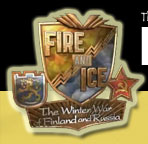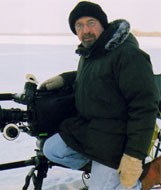

The Molotov-Ribbintrop
Pact
Word / PDF
ESSAY
Germany and the Soviet Union were bitter rivals. Their political, economic and social systems were at opposite extremes. In addition, Nazi Germany believed its people were a dominant Aryan race, while the Russians belonged to an inferior Slavic species. However, relations between the two nations began to thaw with political contacts in Berlin on March 17, 1939.
One obstacle was removed on May 3, 1939 when Soviet leader Joseph
Stalin appointed Vyacheslav Molotov as Foreign Minister. Molotov
replaced Maxim Litvinov, a Jew, who supported a policy that would
have joined the Soviet Union and the Western democracies in an anti-fascist
coalition. Molotov soon began discussions with the German Ambassador,
Count Frederick Werner von Schulenberg, aimed at establishing political
and economic relations between Germany and the Soviet Union.
On August 19, 1939, German Foreign Minister Joachim Ribbentrop visited
Moscow to sign a trade agreement. The Soviet Union agreed to supply
Germany with raw materials such as oil and timber and Molotov proposed
additional negotiations regarding issues of foreign policy.
On August 23, Ribbentrop returned to Moscow, to sign a non-aggression
pact between Germany and the Soviet Union. The official document
contained seven articles that pledged peace between the two countries,
neutrality in case each nation went to war with a third nation, and
a process of consultation and arbitration.
The document also contained a secret agreement, which divided Eastern
and Northern Europe into German and Soviet spheres of interest. Estonia,
Latvia, Lithuania and Finland were declared part of the Soviet sphere
of interest. Poland was divided between Germany and the Soviet Union.
The secret agreement was not made known until the end of World War
II.
News of the Molotov-Ribbentrop Pact sent shock waves through Europe and the world. Without fear of war on an eastern front with the Soviet Union, Hitler had a free hand in the West. For the Soviet Union, an alliance with Germany removed an immediate threat of war. The Soviets later claimed they signed the treaty to give themselves time to mobilize and build up their own forces for an inevitable war with Germany. Critics, however, claimed it was a cynical move by the Soviets to further their own expansionist foreign policy goals.
On September 1, one week after the two nations signed the treaty, Germany invaded Western Poland. On September 17, the Soviet Union invaded Eastern Poland. The two armies met at the Bug River to occupy and divide the country. Britain and France honored their security guarantee with Poland and declared war on Germany. It was the beginning of war between Germany and the Western democracies.
On September 22, the Estonian Foreign Minister was invited to visit Moscow. One week later, under threat of military force, Estonia signed an agreement allowing Soviet troops and military bases on Estonian territory. In October, the Latvian and Lithuanian Foreign Ministers were invited to Moscow. Under threat of military force, they too signed agreements allowing for a Soviet military presence in their countries. In effect, Estonia, Latvia and Lithuania became part of the Soviet Union.
Finland’s turn came last. The Finns were handed a list of demands that included territorial concessions, Soviet military bases and troops on Finnish territory and a new frontier between the two countries. The Finns refused. On November 30, 1939, the Soviets invaded Finland. It was the beginning of the Winter War.
LESSON PLAN
Grade level 7-12
Time allotment 4-5 55 minute class periods
STANDARDS
World History Standards for Grades 5-12/ Era 8
National Center for History in the Schools
http://www.sscnet.ucla.edu/nchs/standards/worldera8.html
Standard 4A
The student understands the causes of World War II and is therefore
able to:
Analyze the motives and consequences of the Soviet nonaggression
pacts with Germany and Japan.
OVERVIEW
In this lesson, students will examine the motive and consequences of the Soviet’s non-aggression pact with Germany by dramatizing the meeting between Molotov and Ribbentrop, and then creating a newspaper article about the results of the meeting.
OBJECTIVES
At the end of this lesson, students will be able to:
Examine the motivation behind the non-aggression pact between the Soviet Union and Germany
Dramatize a hypothetical meeting between Molotov and Ribbentrop
VOCABULARY
coalition
arbitration
expansionist
Stalin
Molotov
Litvinov
Schulenberg
Ribbentrop
MATERIALS NEEDED:
“Fire and Ice” DVD
Paper and pencil
Word processing software or:
Poster board with markers
INTRODUCTORY ACTIVITY
Once the students have viewed the “Fire and Ice” DVD, review the segment of the documentary that discusses the secret pact between Germany and Russia. (15:32-17:09) Refer to the questions below to set up this film segment. Have students write their answers and discuss them in class after viewing the film segment and reading “The Molotov-Ribbentrop Pact.”
What might be the significance of the replacement of the Jewish
Soviet Foreign Minister?
What information was contained in the non-aggression pact?
What could each country gain by agreeing to the terms of this pact?
What instigated war between Germany and its neighboring democracies?
In what way did Poland respond to the invasion of their country?
Estonia, Latvia and Lithuania all conceded to the Soviet Union. What
made the Finns so different?
ACTIVITY
Have students divide into two equal groups of Germans and Russians. Students will create a script for a dramatization of the meeting between Molotov and Ribbentrop. They will then cast various students to assume the roles of each of the characters that may have attended this meeting, such as Molotov and Ribbentrop themselves, journalists, aides, advisors, etc. Use the following questions to guide students in writing their script:
What was the general mood of the meeting?
How did the Germans and the Russians treat each other in this meeting?
Who else would be allowed to speak besides Molotov and Ribbentrop?
What conditions did each side bring to the table?
What agreements were made and what conditions were denied?
How much of the meeting would the journalists be allowed to attend?
Who was present when the secret part of the agreement took place?
How was the division of the spheres of interest decided?
What private conversations took place at the end of the meeting?
CONCLUSION
Once the students have presented their dramatization,
have each side design a newspaper front-page article from the journalists’ notes.
You might create these newspaper articles on a word processing document,
or using poster board and archived copies of pictures from Internet
research using the Web sites provided in this guide.





